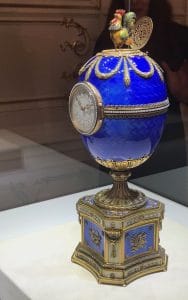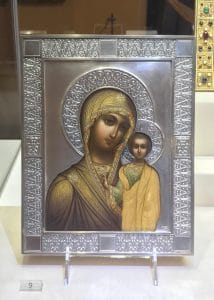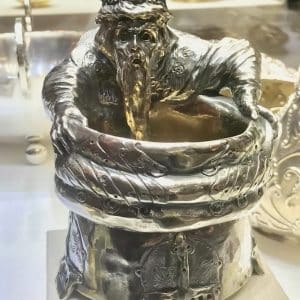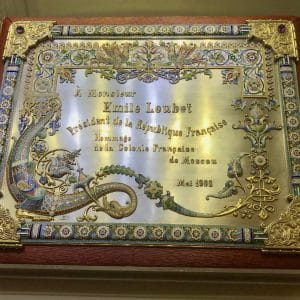The Faberge Museum, opened in 2013, is one of Saint Petersburg’s newest. Privately owned by Russian businessman Viktor Vekselberg’s The Link of Times Foundation, this museum displays lost art and artifacts that have been repatriated back to Russia thanks, in large part, to the tech tycoon’s wealth.

One of the many tragedies stemming from Russia’s tumultuous history is the massive loss of cultural artifacts that have followed Russia’s changing political fortunes. Following the revolution of 1917, many privately held valuable items were taken abroad by the white émigrés who fled the communist takeover. Other pieces were auctioned off by Antikvariant, an early Soviet institution tasked with selling pieces of art and antiques (often for much less than they were worth) to raise much-needed funds for the cash-strapped Soviet government. While the museum does not emphasize it, Russia also lost many artifacts after the collapse of the USSR, as the economy and security of the state crumbled and crime skyrocketed.
The Faberge museum thus hopes to correct as many of these historical wrongs as possible. The large collection of Faberge eggs, purchased in 2004 from the Forbes Family and representing Vekselberg’s first major acquisition, are just the most famous items on display. These were eggs created specifically as Easter gifts for the Romanov Dynasty. Under the Emperors Alexander III and Nicholas II, the House of Faberge created 50 eggs for the emperors to present to their mothers and wives as presents. Malcolm Forbes had begun collecting Faberge eggs in the 1960s, and had set the goal of personally owning more Imperial Easter Eggs than the Soviet government. Vekselberg purchased the full Forbes collection of nine Imperial Eggs for an estimated $100 million. It is the second largest collection in the world – behind only that held by the Kremlin Armory in Moscow. The eggs are one of the first exhibits visitors see, located at the top of the grand staircase.
Other rooms host a wide array of art. A floor plan of the palace can be accessed on the Faberge Museum’s website, which provides a description and several pictures of what is housed in each of the ten rooms on the map. Exhibits include repatriated Russian-produced art ranging from enamel and silver work, paintings, porcelain, stone carvings done by Faberge, and an impressive amount of religious art ornately decorated with silver, gold, and gems.

The museum building itself is also an interesting artifact reclaimed from the jaws of history. The Shuvalov Palace, once a grand residence for the noble Shuvalov family, fell into neglect after the 1960s under the Soviets. By the end of the 1990s, the building suffered from not only extensive cosmetic damage, but potentially dangerous structural weaknesses. Vekselberg’s organization restored the unique beauty of each room and the building’s structural integrity while managing to maintain as much of the original construction as possible. Most rooms are now lit to not only cast a soft focus on the artifacts, but also to show the restored historical splendor of each room.
The Faberge Museum in St. Petersburg serves as much more than a diverse collection of some of the most beautiful works of art produced in Russia. The Faberge Museum stands as a reminder of the hardships and losses that Russia has faced over the past century. It is also a reminder, of course, that Russia has always rebuilt after its losses and risen again.
Faberge Museum
21, Fontanka River Embankment
Open from 9:00 a.m. to 10:00 p.m. every day except for Friday
Guided tour (600 rubles, 300 with a student ID) is recommended








